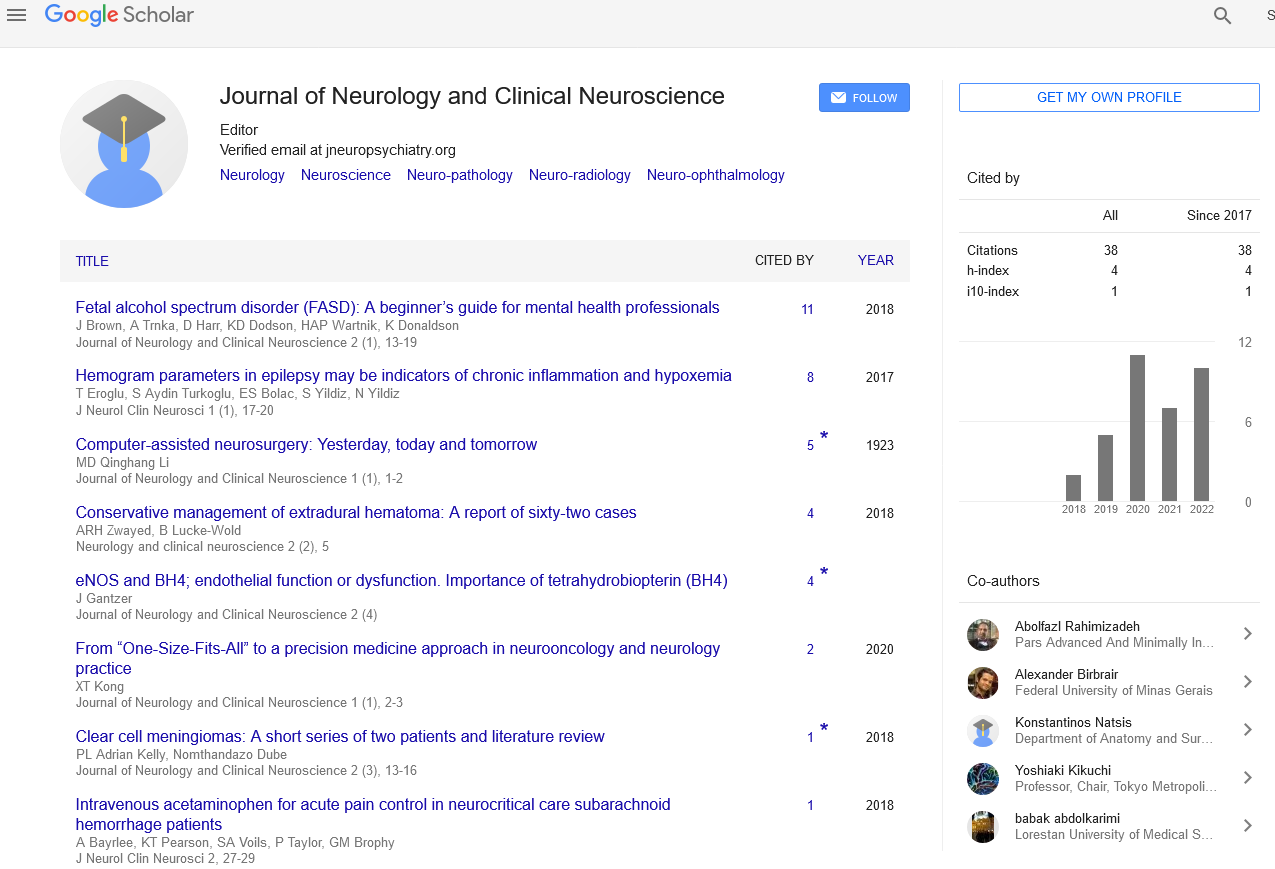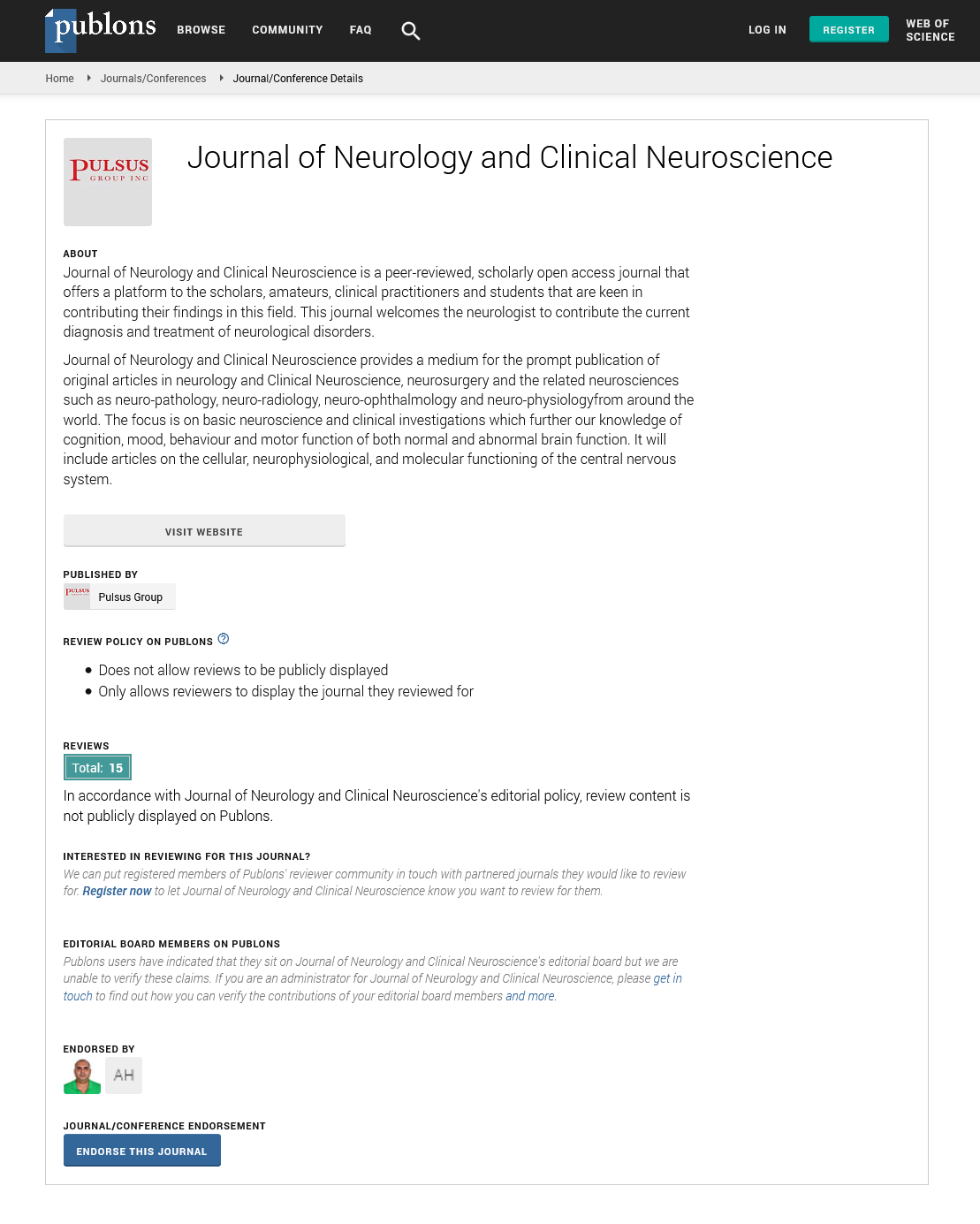Sign up for email alert when new content gets added: Sign up
Formulation of non-ionic surfactant vesicles (NISV) prepared by microfluidics for therapeutic delivery of siRNA into cancer cells
Joint Event on 4th International Conference on Neurology and Healthcare & International Conference on Clinical and Experimental Neuropsychology & 3rd World Drug Delivery and Formulations Summit
June 24-25, 2019 | Rome, Italy
Mohammad Ali Obeid, Alexander B Mullen, Rothwelle J Tate, Valerie A Ferro
Yarmouk University, Jordan
University of Strathclyde, UK
Posters & Accepted Abstracts: J Neurol Clin Neurosci
Abstract :
Introduction: RNA interference involves the degradation of a target messenger RNA through the incorporation of short interfering RNAs (siRNA) [1]. The application of siRNA-based therapeutics is limited by the development of an effective delivery system. A novel type of nanoparticles known as Non-Ionic Surfactant Vesicles (NISV) are commonly used for drug delivery of various therapeutics, are relatively safe and non-expensive, have not been extensively studied for siRNA delivery [2]. Therefore, the aim of this study was to investigate the potential of NISV prepared by microfluidics for siRNA delivery.
Methods: NISV were prepared by microfluidic mixing which is a recently developed method used to prepare lipid-based nanoparticles and results in the production of small vesicles with efficient encapsulation of a therapeutic agent. To prepare NISV, specific volumes from each stock solution of the NISV components were mixed together to prepare the lipid phase. The lipid phase was injected into the first inlet and the aqueous phase into the second inlet of the microfluidic micromixer, with the mixing temperature set at 50°C. The Flow Rate Ratios (FRR) between the aqueous and organic phase was set at 3:1 and the Total Flow Rates (TFR) of both phases was set at 12 ml/min. This allows for fast mixing between the two phases at high flow rates and at a temperature above the phase transition of the lipids. Dispersions were then collected from the outlet stream and immediately diluted in order to reduce the final ethanol content in the preparation to 6.25% (v/v). Cytotoxicity evaluation of NISV were carried out on non-small lung cancer cells (A549) and mouse melanoma cells (B16-F10-LUC). siRNA targeting Green Fluorescent Protein (GFP) in copGFP-A549 cells, or luciferase in B16-F10-LUC cells were encapsulated in NISV. Inhibition of GFP expression by anti-GFP siRNA (siGFP) delivered using NISV was evaluated by flow cytometry, polymerase chain reaction, and Western blotting. Nude BALB/c mice inoculated with B16- F10-LUC cells that induce melanoma expressing luciferase was used to assess the NISV ability to deliver siRNA in vivo.
Results: Cytotoxicity studies indicated that NISV were not toxic at or below 40 μg/ml. NISV formulations had high siRNA encapsulation efficiency. Fluorescent microscope and flow cytometry studies indicated high cellular uptake by the cells compared to naked siRNA, which was not taken up by the cells. NISV were able to deliver siGFP to the cells and significantly suppress GFP expression. These results were confirmed by transfecting the luciferase producing B16-F10-LUC cells with anti-luciferase siRNA (siLUC). Measuring the level of luciferase expression after siLUC transfections using a luciferase protein assay system successfully demonstrated the suppression of luciferase expression. NISV were then used in in vivo experiments using nude BALB/c mice. After intra-tumoural injection, siLUC was delivered to the cells and suppressed luciferase expression at a significantly higher level than mice treated with naked siLUC. These in vivo results confirm the ability of NISV to successfully deliver siRNA into the cytoplasm of the target cells and suppress the target protein.
Conclusion: NISV have been demonstrated extensively and for the first time to have the potential to be used as a delivery system for siRNA. These results have shown that NISV can be used to overcome the barriers, such as low stability and poor cellular uptake, in siRNA-based therapeutics.





